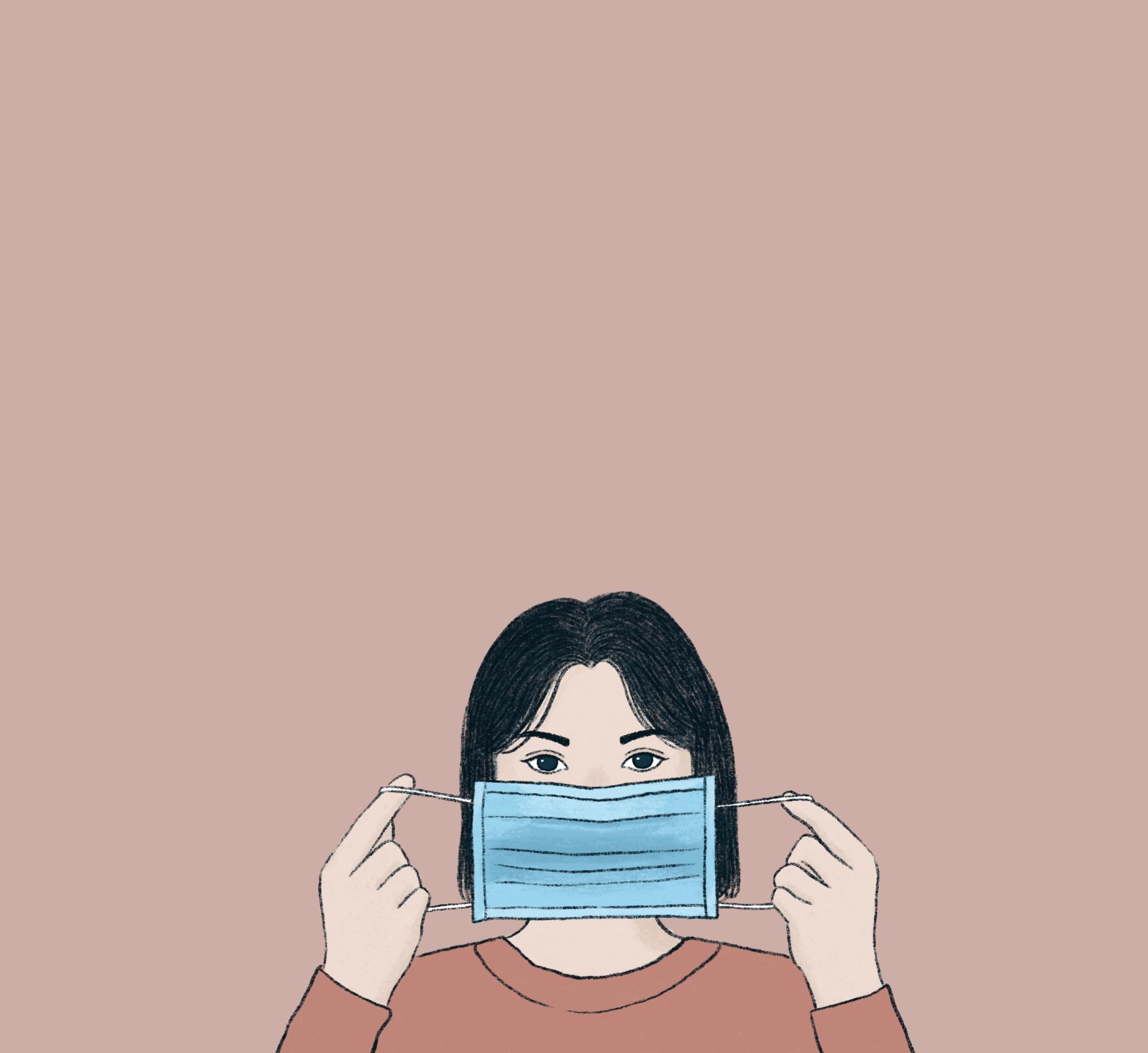As the weather turns colder and the changing leaves mark the arrival of fall, sickness also makes an appearance. A classmate that usually comes to lecture is suddenly no longer there, and around every corner of campus, the echoes of coughs can be heard.
In times like these, it is of utmost importance to protect yourself and others, often in the form of wearing a mask. Yet, I have seen too many people who have been visibly sick but also visibly barefaced—that is, with no masks in sight. This is in no manner an accusatory statement, but rather one in observance and solidarity. I myself at times have been the perpetrator of this issue, even though I would like to say that, for the majority of the time, I do wear a mask when I am sick. So, why do so many of us not wear masks when we feel sick?
To first dive into this question, it’s important to consider the culture of wearing masks in public within the United States. In many other countries, notably, East Asian countries, wearing masks has always been normalized. It’s not uncommon to see people of all ages wearing masks in their day-to-day lives. In fact, mask usage in East Asian countries has become so ingrained in the culture that they have evolved into beauty and fashion accessories. In the United States, however, mask use is more a marker of disease than a common practice, as mask usage before COVID-19 was only seen in healthcare or laboratory settings. Thus, wearing a mask in the United States makes someone stand out, and with the implication being that of sickness, not in a good way. The overall individualist mindset ingrained in the people of the United States doesn’t help either; with less emphasis placed on community and civic responsibilities, there are less reasons for a person to wear a mask. This individualist mindset is what also caused the mask to be in the political spotlight for so long, contributing to the hesitancy surrounding mask-wearing. To some, the mask was the antithesis to the principles of American democracy: autonomy and freedom. To others, maybe not so much. But regardless of which side you may be on, it’s true for everyone that anything in such an intense spotlight for that long will start to look different. Just the fact that the mask was debated for so long is a factor in how we view the mask in our everyday lives.
Public mask-wearing in the United States is stigmatized. Of course, after COVID-19, mask use has become more normalized. The percentage of American adults who regularly wore masks during this time rose substantially (from 50 to 90 percent), likely due to the state-enforced mask mandates. However, in the current year of 2025, five years out from the beginning of COVID-19, it seems that this normalization has dwindled. Why? The reasons, I think, can be attributed to the stigma that still manages to persist after COVID-19.
Let’s draw out a scenario, one that I’m sure we all experience at least once a year. You wake up in the morning with a scratchy voice and a cough creeping up your throat. You know you’re sick—you can feel it. As you get dressed, you think about whether you should wear a mask or not. You will undoubtedly be in contact with many people today, whether that be the hundreds of students in your lectures, your friends or your teachers. With all this in mind, why do you not wear a mask?
Maybe wearing a mask is uncomfortable, you don’t want other people to know that you’re sick or you even want others to get sick because someone else who probably wasn’t wearing a mask got you sick. All of these reasons are selfish, but also understandable, given the individualist mindset that the United States pushes, as well as the cultural stigma around wearing masks in the United States. Even after COVID-19, which killed over one million people in the United States alone, wearing masks in the United States still holds a negative connotation. From there, it feeds into a negative cycle; if I see someone visibly sick without a mask, I might be less inclined to wear a mask when I get sick.
Of course, wearing a mask when you feel sick, especially now that there are no mandates, is a personal choice. But a personal choice always affects more than just the person making the decision. And though there is still an ever-looming political and cultural cloud around the mask in the United States, it’s necessary to boil it down to what it is in our day-to-day lives: a way of keeping ourselves and others safe. So, here’s a PSA for all those listening: if you wake up feeling sickly, put on that mask quickly!



